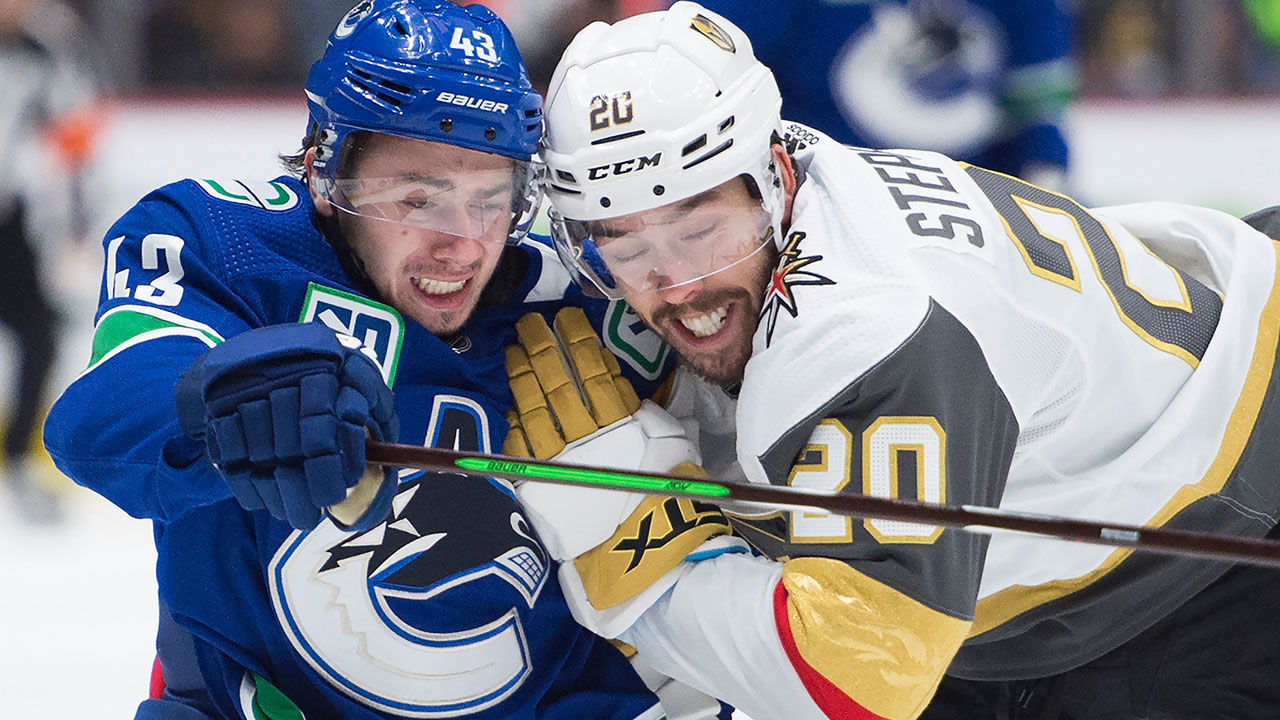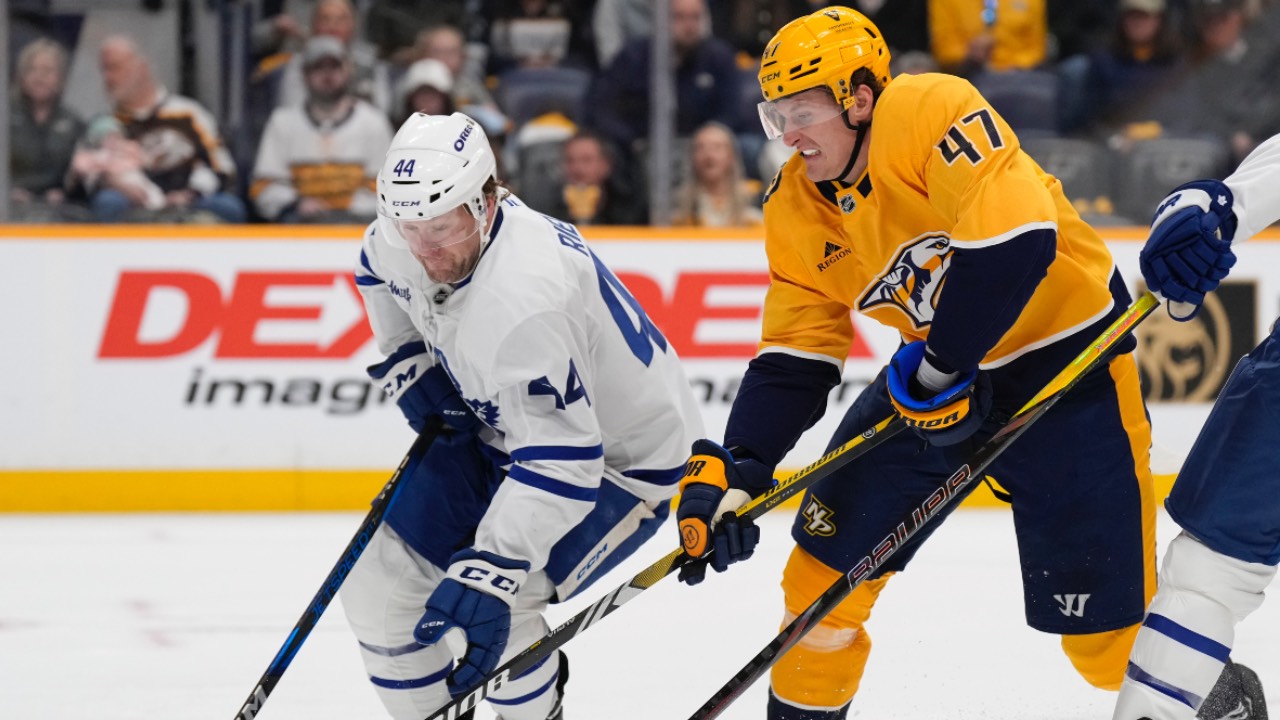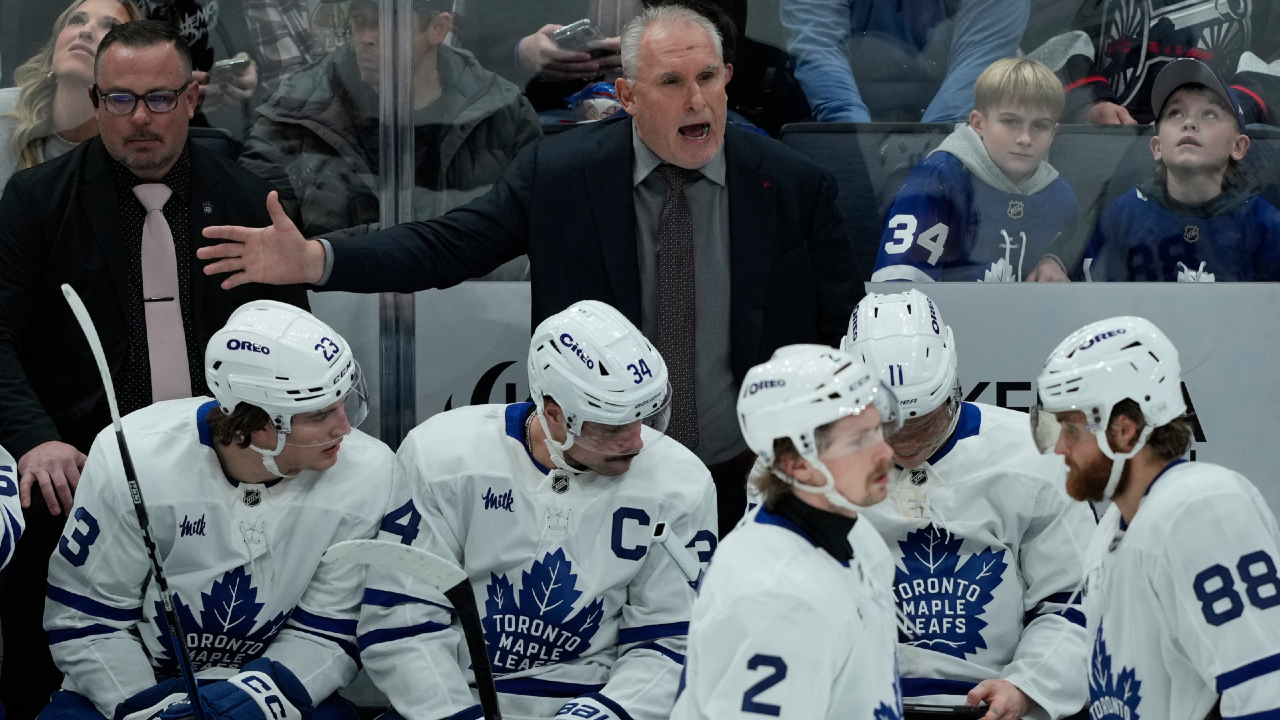
If there is any team in these Stanley Cup Playoffs that has consistently silenced doubters, including myself, it’s the Vancouver Canucks. I expected the Canucks to struggle and lose against the superior 5-on-5 team in their qualifying round, but they took out the Minnesota Wild in convincing fashion.
Nearly everyone expected the St. Louis Blues to put the Canucks down, defending Stanley Cup champions and all, but without Vladimir Tarasenko for most of the series, shoddy goaltending from Jordan Binnington was repeatedly exposed by the Canucks’ ‘never say die’ offence and they managed to knock off the defending Cup champs without even needing a seventh game.
The Canucks’ reward for that was to face off against the top-seeded Vegas Golden Knights in Round 2, and the first game was a show of force by the Golden Knights in a 5-0 decision. In terms of expected goals, the game wasn’t much closer, with Vegas’ shots totalling an expectation of 4.18 goals to Vancouver’s 1.44.
As is usually the case in a blowout game, the play on the ice was a bit closer than the score line suggested, but Vegas’ dominance was clear all game long, with the Canucks failing to get a single shot on net from the slot in the second half of the game.
Overall, shots on net from the slot were 23-6 for Vegas, and shot attempts from the slot were 39-13. Any time your opponent triples your scoring chances, something has gone drastically wrong.
Stylistically, there are some areas where the Golden Knights hold a big advantage over the Canucks, but what went so wrong in Game 1 specifically?
One of the most obvious issues the Canucks had was how effectively the Golden Knights hounded Quinn Hughes. Hughes has been one of the lynchpins of the Canucks’ surprising playoff run, and he is arguably their most important skater with how often he controls the puck, dictating the pace and direction of play for the Canucks.
So far in these playoffs Vancouver has had the puck in its possession for 136.65 minutes at 5-on-5, and Hughes has been carrying the puck for a whopping 12 per cent of that time. That’s a gargantuan amount of puck possession, and the next-closest Canuck is his regular defence partner Christopher Tanev, who is responsible for 8.6 per cent of the Canucks’ possession time.
By contrast, Elias Pettersson, who is far and away the Canucks’ best overall forward, has only been the puck carrier for 6.6 per cent of the Canucks’ total possession time at 5-on-5. It’s beyond clear how important Hughes is to the Canucks, and the Golden Knights leaned on him hard in an attempt to take him out of the game.
With no space to make plays, Hughes saw his turnover rates soar in Game 1.

In every area of the ice against Vegas, Hughes was less successful making plays than he was throughout the first two playoff series he played in. The offensive zone was in particular a point of consternation, where Hughes turned the puck over on a whopping 40 per cent of his attempted plays.
Turnover rates aren’t the only area that captures how tough the Golden Knights were on Hughes either. In a typical game in these playoffs, Hughes has averaged 73.5 possessions where he’s making a play with the puck at 5-on-5. In Game 1 against the Golden Knights, that number dropped to 43.
Keeping Hughes away from the puck in the first place, and hounding him so hard when he gets it that he’s going to turn it over significantly more often than usual, broke the flow of the Canucks’ game plan.
That aggressive checking on Hughes is unlikely to stop going forward considering how successful it was, so the Canucks are going to need to find a way to find success while Hughes has less time and space than he’s used to.
That means more support for Hughes in puck battles and providing shorter passing options so he can play the puck quicker and more decisively. Hughes, too, will need to pick up his game and maintain focus despite likely being very frustrated.
Another issue facing the Canucks is that when they get behind, they’re not a great counter-attack team that hits opponents hard off the rush. They had some great moments on the counter attack against the St. Louis Blues, but that has been a rarity this season. They were one of the league’s worst teams at generating chances off the rush, and one of the worst at defending rush chances.
Against slower teams like the Wild and Blues, that wasn’t a huge factor, but the Golden Knights are blisteringly fast and attack in waves off the rush even while leading. In Game 1, despite being ahead all game long, the Golden Knights out-chanced the Canucks 9-4 off the rush.
Since it’s difficult for the Canucks to draw blood on the counterattack, they’re very reliant on their power play to come back in games, but they were only able to draw one penalty from the Golden Knights in the first game of the series.
If that trend continues, it’s going to be paramount that the Canucks come out flying in the first 10 minutes of each game and attempt to grab an early lead. The Golden Knights aren’t a team that you want to be stuck playing against from behind, unless of course they take a five-minute major in an elimination game.
If the Canucks are able to draw more penalties, you can expect a much more tightly contested game. In their single Game 1 power play, the Canucks managed a sequence where they put three inner slot shots on net. Vancouver’s power play is lethal when it gets a chance to shine.
One area where the Canucks will need to focus in order to draw those penalties is puck battles. In Game 1 the Golden Knights won 57 per cent of the puck battles at 5-on-5, and 52 per cent of the loose pucks overall. That forced the Canucks to be chasing the play too often. Make your opponents chase instead, and you’ll get some hooking and holding calls.




